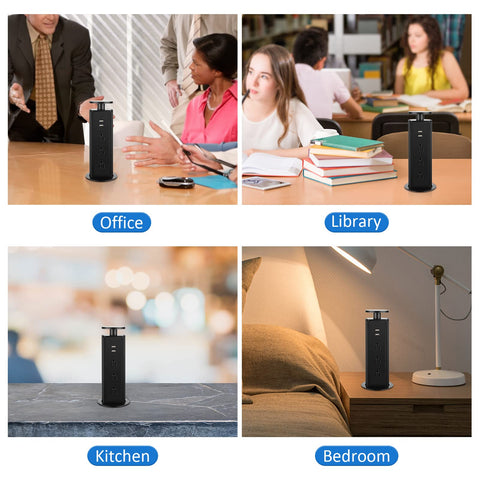
In the realm of modern living, electrical outlets play a pivotal role in seamlessly connecting our devices to the power grid. This blog will delve into the world of outlets and receptacles, exploring their diverse functionalities, ideal use cases, and the pros and cons that come with various designs.
Understanding the Basics:

An outlet or receptacle is the gateway to power in our homes and offices. Often interchangeably used, these essential components consist of multiple holes designed to accommodate the prongs of a plug, the part of an electrical device that inserts into the outlet.
Common Terms:
Outlet: A generic term for the power source in a wall or surface.
Receptacle: Often used in technical or engineering contexts to refer to the electrical socket.
Plug: The component of an electrical device that connects to the outlet.
Functionalities:
USB Ports for Convenience:

Many modern outlets come equipped with USB ports, eliminating the need for bulky adapters and providing a convenient charging solution for smartphones, tablets, and other USB-powered devices.
GFCI Protection:
Ground Fault Circuit Interrupter (GFCI) outlets are designed to protect against electrical shock. They are commonly found in areas with water exposure, such as kitchens and bathrooms.
Smart Outlets for Automation:
Smart outlets allow for remote control via smartphone apps or voice commands. This feature adds a layer of convenience, enabling users to control connected devices even when away from home.
Tamper-Resistant Outlets:
Ideal for homes with children, tamper-resistant outlets feature a mechanism that prevents foreign objects from being inserted, ensuring safety for curious little hands.
Ideal Use Cases:
Living Rooms and Bedrooms:
Standard outlets for powering lamps, televisions, and charging personal devices.

Kitchens:
GFCI outlets near sinks and countertops for added safety.
Outlets with USB ports for charging kitchen gadgets.
Home Offices:
Smart outlets for controlling lighting and electronics remotely.
Outlets with surge protection for safeguarding sensitive electronics.

Outdoor Spaces:
Weather-resistant outlets for decks and patios.
Outlets with covers for protection against the elements.
Pros and Cons:
Pros:
Versatility: Outlets cater to a wide range of devices.
Convenience: USB ports and smart features enhance user experience.
Safety: GFCI and tamper-resistant outlets prioritize user safety.
Cons:
Aesthetic Impact: Outlets can disrupt the visual appeal of a wall.
Installation Complexity: Installing new outlets might require professional assistance.
Conclusion:
Electrical outlets are the unsung heroes of our connected lives, providing the power we need for work, entertainment, and daily living. Understanding the functionalities, use cases, and pros and cons of different outlet types empowers us to make informed choices, ensuring that our spaces are not only functional but also safe and efficient. Upgrade your outlets to suit your lifestyle and witness the transformation of your living spaces.

